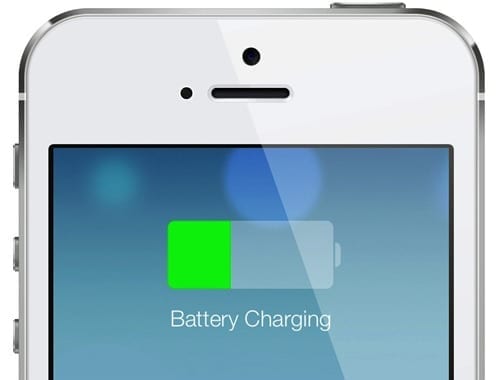The batteries, as we have already commented on this blog countless times, they are the weak point of all iPhone worth its salt. Perhaps due to our desire to minimize the problems that they may cause us, we have entered into a dynamic of believing anything related to care, charging cycles or battery life that in most cases are not entirely true or even they are real problems, but that current batteries do not suffer at all. In this post we are going to collect 6 of these related "myths" so that you can see that not everything that is said is true.
1. Electrocution from using iPhone while charging
FALSE. This myth, or rather real case, I get to appear in various media as an obvious danger of new technologies, but nothing is further from reality. The case itself was that a Thai man he died electrocuted while using his iPhone 4S normally while it was charging. In the end and always according to the investigation, it turned out that the man had the wet hands (it seems they did not warn him of the danger of this) aside, I was also using a unofficial charger. With this, something that Apple continuously alerts us is evident, you do not have to use unofficial chargers. Obviously I am not on the side of Apple that almost forces us to pay 30 Euros for a charger of our own, but I know that there are alternatives for practically half the price, which are not Apple, but from a brand that is at least known and reliable.
The iPhone can be used perfectly and without any problems while chargingYes, keep your hands dry and a reliable charger.
2. Turning off the iPhone from time to time helps extend battery life
FALSE. It is true that it is a good habit to keep in mind for the care of any electronic device, and the iPhone of course, it was not going to be less, but this has nothing to do with extending the life of the battery.
3. Batteries have a limited life cycle.
TRUE. Today's batteries, even the most sophisticated ones, have a limited life cycle, this is that after a certain use and charging cycles (It is not possible to set an exact number as it depends on the wear and tear of the batteries) batteries lose charge capacity. The batteries that Apple installs in iPhone They are of the highest quality and for this reason, the brand itself guarantees that throughout their useful life they will not lose more than 20% of its load capacity, Therefore, a battery at the limit of its existence will accumulate 80% of the energy that it accumulated fresh from the factory, it is a quite acceptable margin for the use and benefits that are required of an iPhone.
This does not mean that a battery can fail and lose more charge capacity than others, discharge sooner or lose communication between cells, causing the charge to drop suddenly even if you see that you still have some charge left.
4. The fewer charge and discharge cycles your battery undergoes, the better.
TRUE. Batteries lose capacity even with the passage of time, even without being used, but it is true that they wear more the more charge and discharge cycles they undergo. For this reason, as long as you have the possibility of having the iPhone plugged in and that it reaches one hundred percent of the charge, better since while this happens the device will work with the energy supplied by the USB connector, that is, if it is plugged in and at 100% load, the battery does not intervene. This brings us to the next myth.
5. The battery will be overcharged if it is still plugged in at 100%.
FALSE. Precisely because of what we have explained before. Once XNUMX% load is reached, there is a hardware level system, installed on the iPhone that detects it and cuts the current to the battery, so if it is still plugged in, the battery will not be damaged. In fact to avoid "stress" In the battery components, when it is reaching the limit of its capacity, the system itself performs a series of charge-discharge cycles until it reaches the full charge, causing that once this percentage is reached, the battery remains in repose.
6. If the iPhone heats up while charging, something is wrong.
FALSE. It is perfectly normal for the iPhone to rise in temperature while charging and especially on hot summer days, it means that everything is running its course. In fact, you will also observe that this rise in temperature is only noticeable at the beginning of the charge, after a while and if it is still plugged in, the iPhone will cool down because it is already fully charged.
7. Batteries last less if you start charging them without being fully discharged.
FALSE. This phenomenon is the known memory effect which consists in that if a battery begins to charge with 20% of its capacity (for example)When the battery discharges, the total battery capacity will be reduced by 20%. Due to this, it has always been on everyone's lips that it is necessary to start charging our devices only when they are completely discharged. As well, the lithium-ion batteries of our iPhone do not have that memory effect, so they can start charging without any problem whatever their charge level at the time of plugging them in.
It is more than clear that the battery is the heart of our device and that you have to take care of it like gold on a cloth, but we don't always have to believe everything we read out there, because as you may have already seen, it is either totally false or out of date.


Thank you very much for the article. I find it very interesting and useful, finally a site where they tell the truths about current batteries and you can clear up doubts.
Before I had found this post that talks about battery problems in an Xperia U, which the Orange (Disaix) technician argues, according to the answer he gives, contradicts point 5 of your article. Probably, since they are different phones, different brand and different OS, since you are both right in each case, can you confirm it? https://es.answers.yahoo.com/question/index?qid=20130922090737AAnVG2u
Thank you so much!!
how many times can an iphone be charged before the battery dies